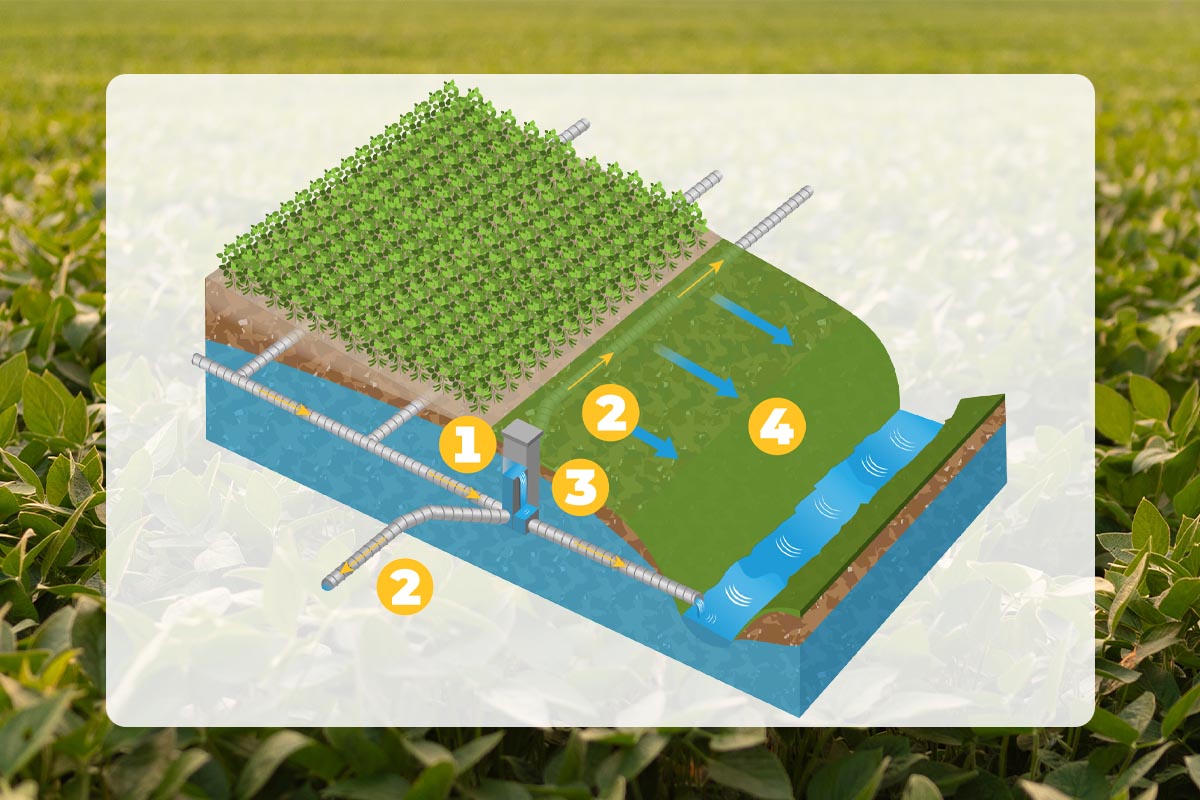
A typical saturated buffer design where a water control structure (1) intercepts field drainage, diverts water into a perforated distribution pipe (2) running along the buffer. A bypass feature (3) prevents any field drainage issues. Water seeps through the buffer soil (4), where microbes convert nitrates in the water to harmless nitrogen gas.
Optimizing saturated buffers for nitrogen reduction
October 1, 2025
By Chris Hay, Hay Water Solutions owner, and Alex Buseman, ISA conservation services manager
Saturated buffers are an innovative conservation drainage practice designed to reduce nitrate losses from agricultural drainage systems. By rerouting tile drainage water through a vegetated buffer area, these systems remove nitrate from the water, significantly improving water quality. A newly developed decision support tool now provides designers with a powerful way to optimize the design and implementation of saturated buffers, ensuring maximum nitrogen load reduction at the lowest cost.
What are saturated buffers?
Saturated buffers intercept tile drainage water and distribute it through a vegetated buffer as shallow groundwater. Unlike traditional grass buffers, they target tile drainage water, a major source of nitrate loss from tile-drained agricultural land. A water control structure on the drainage main within the buffer raises the water level, directing a portion of the drainage water into shallow, perforated distribution pipes running roughly parallel to the stream or ditch to seep back toward the ditch or stream. This process allows nitrate in the water to be removed by microbial denitrification or absorption by plants. The water control structure is designed to bypass drainage water that exceeds the buffer capacity directly to the outlet so that drainage in the field is not negatively impacted.
Introducing the saturated buffer tool
Developed by researchers at Michigan State University in collaboration with North Carolina State University, Iowa Soybean Association (ISA) and Iowa State University, this decision support tool optimizes saturated buffer designs. Development was funded by a grant from the USDA Natural Resources Conservation Service. ISA conservation staff tested the tool to help the developers make improvements.
Current design practices are based on treating a percentage of the maximum drainage capacity. However, more flow diverted to the buffer does not mean more nitrate is removed. The new tool uses local soils, climate and drainage system information to estimate drainage and nitrate losses over multiple years and finds the optimal saturated buffer to remove the most nitrate. Cost information allows the tool to be used to select the best performing and most cost-effective sites and designs.
Benefits for farmers
Designers using this new decision support tool can help farmers gain more insights into the potential of saturated buffers to reduce nitrate losses from their farm and how different sites compare. Using this decision support tool ensures successful implementation tailored to their unique landscapes.
Call to action
Now is the time to take the next step in conservation. ISA makes it easier than ever to install saturated buffers by offering both technical and financial assistance to Iowa farmers. From identifying suitable sites to securing funding, our team walks alongside you through every phase of the project.
Our conservation services managers, Brandon Iddings and Alex Buseman, take care of the heavy lifting — handling the paperwork, permitting and coordination with agencies, so you don't have to. We know your time is valuable, and we're here to remove barriers that stand between you and conservation practice adoption.
If you've considered doing more for water quality, habitat or sustainability, we're ready to help you make it happen. Reach out to ISA's conservation services managers for assistance.
Written by Chris Hay and Alex Buseman.
Back